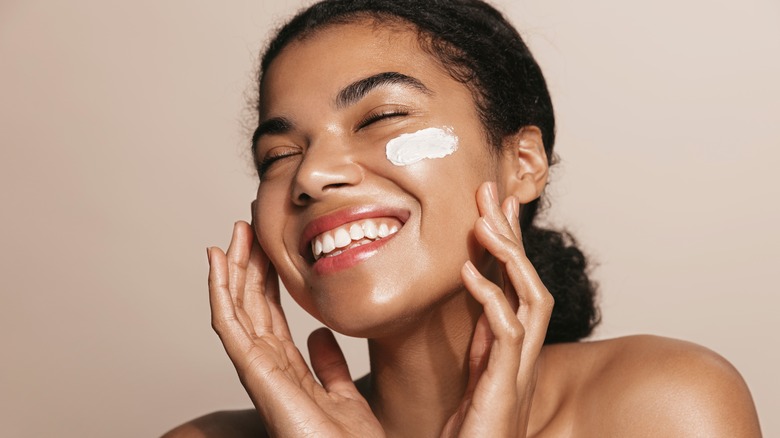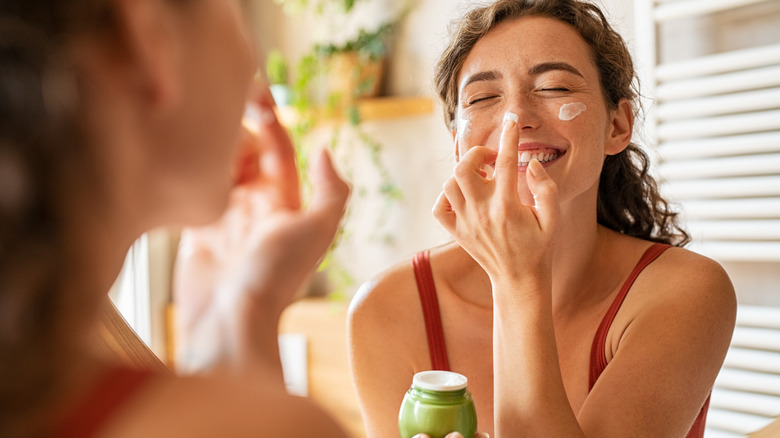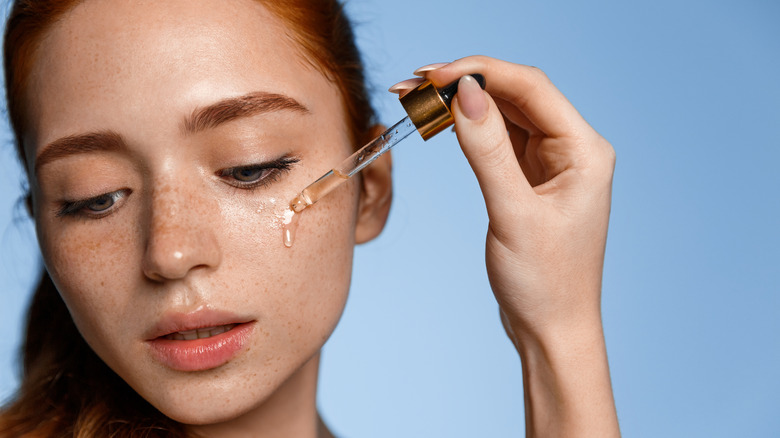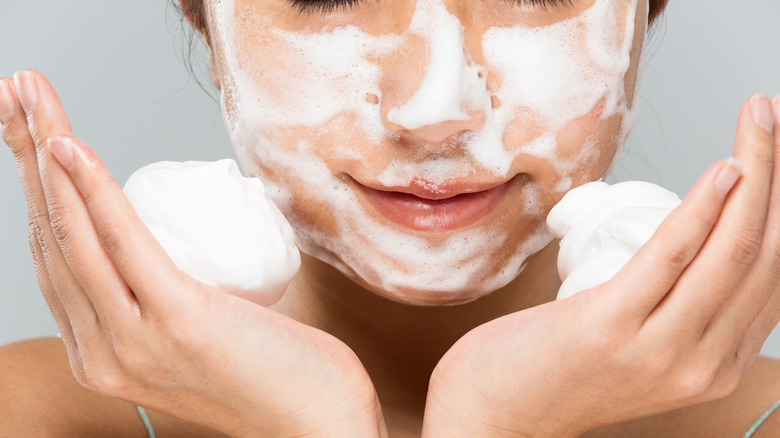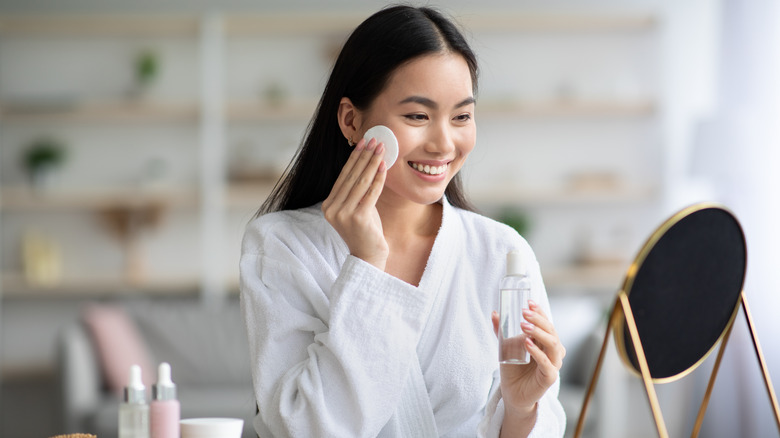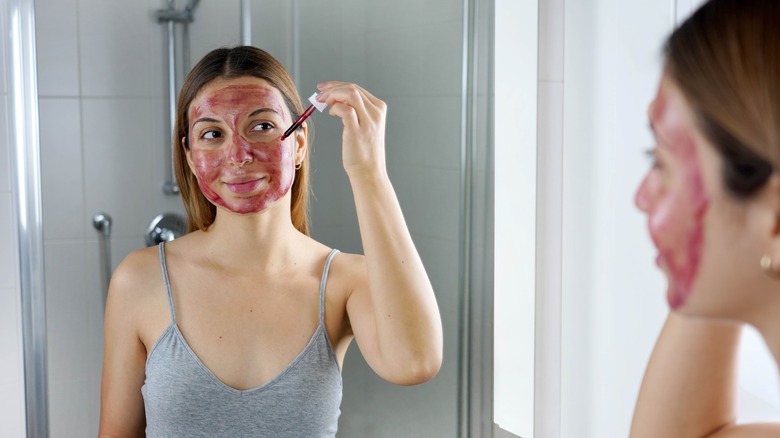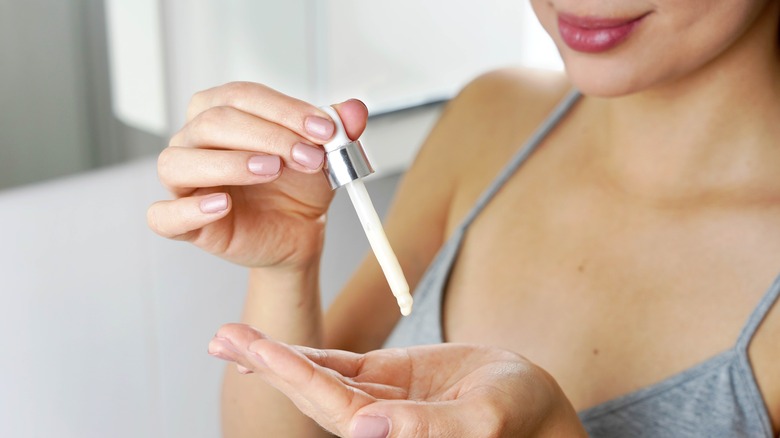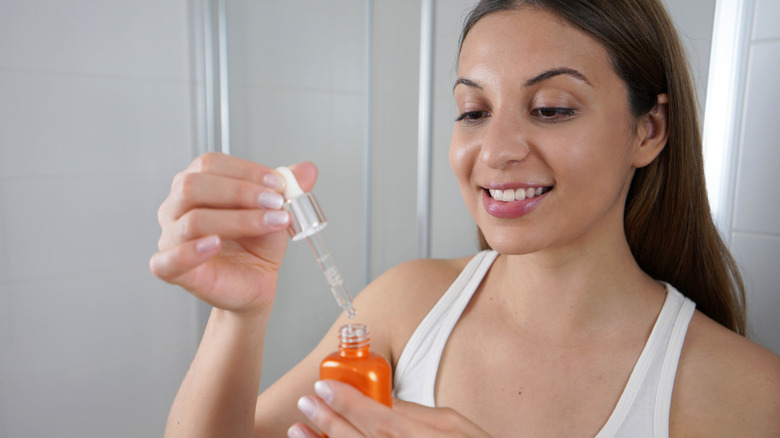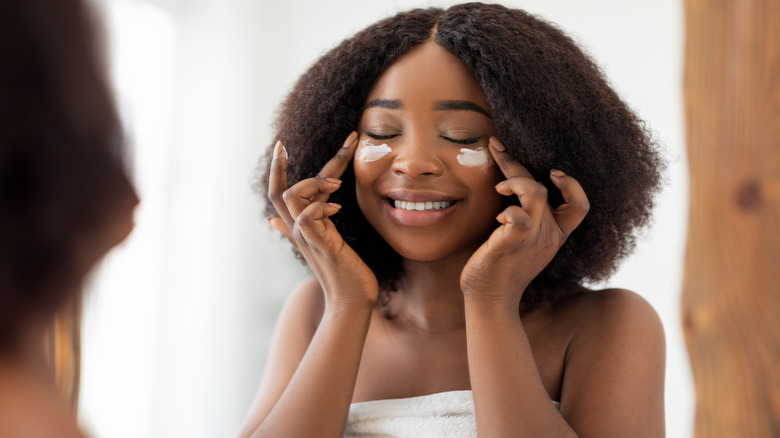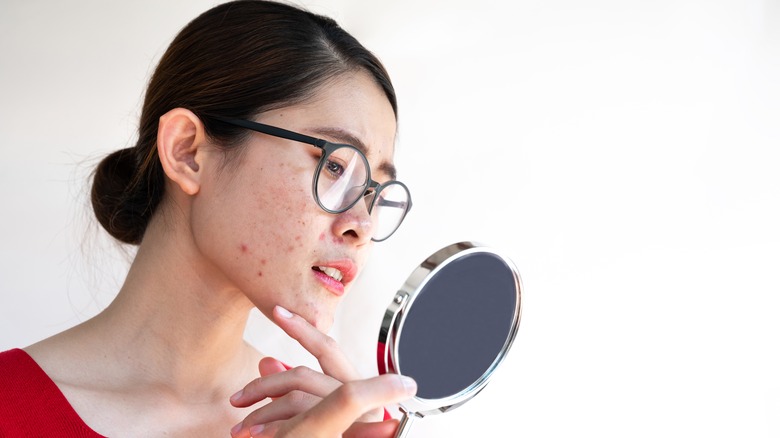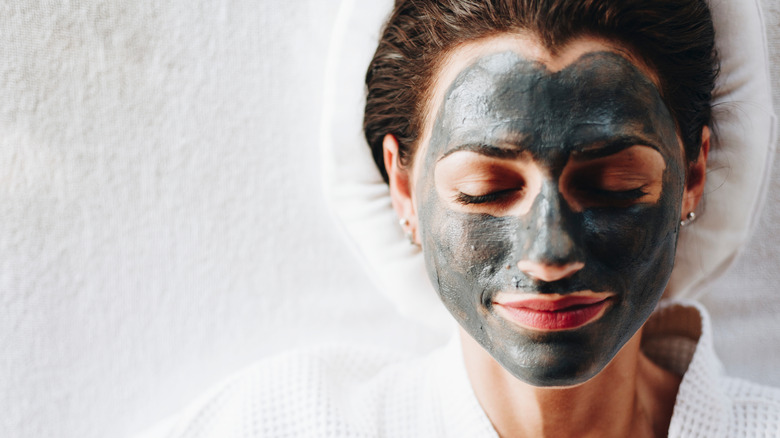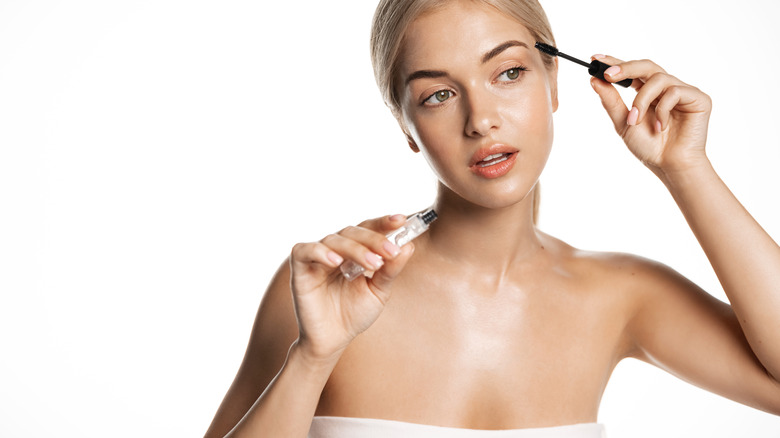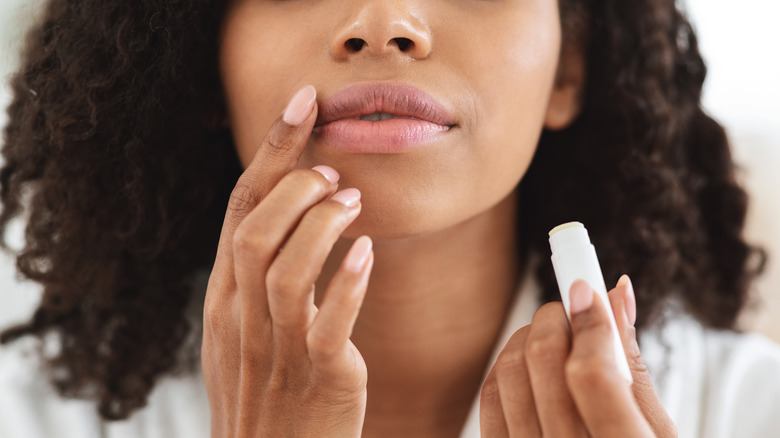How Long Does It Really Take To See Results From Your New Beauty Products?
We've all been there — you just bought a new beauty product, eagerly applied it and you're already wondering when you can see results from it. While the time it takes to see changes in our skin depends on the product's individual ingredients — as well as our own skin — a general rule of thumb is that we need to use a new skincare product for at least 28 days before we can properly judge it.
"The timeline to see results is entirely dependent on what kind of product you are using," Dr. Aanand Geria, M.D., F.A.A.D told The Zoe Report. "But I think 28 days is a good rule of thumb." 28 days is the length of the typical skin cycle — the period in which fresh skin cells appear, mature, die, and shed, meaning that any product you use for 28 days has enough time to show its full potential.
However, some skincare products don't need as much time, while others need a couple of skin cycles to show off what they can do. Here's how much time you should give your moisturizers, toners, serums, and more before you decide to toss them out.
Moisturizers: immediately to two weeks
Because moisturizers tend to be the most commonly bought skincare item, brands have perfected the art of making them work their magic as fast as possible. "A lot of moisturizers have ingredients in them that will fill in the peaks and valleys in the skin, like hyaluronic acid, and you'll see an improvement right away, but it will be short-lived," Dr. Julia Carroll, director of Compass Dermatology and lecturer at the University of Toronto Carroll told Global News.
Per Beautiful with Brains, most moisturizers should begin working after a day or two — and if your skin is dry you will definitely notice improvement quickly. There should also be an instant feeling of smoothness after application, and any tightness you might feel on your face after having washed it should be gone. However, Gameela Skin notes that products that contain ingredients meant to improve the skin barrier (such as ceramides, glycerin, or panthenol) take approximately two weeks to begin noticeably working.
Serums: four to six weeks
According to Evolve Organic Beauty, because serums tend to target different skin concerns such as acne, wrinkles, or pigmentation, it usually takes a bit more time before you can see results. Generally, four to six weeks should be enough to see whether a serum is doing anything for your skin.
"There is a huge range of serums for all sorts of skincare goals, which makes it hard to predict how long it will take for the results to become visible," Lauren Lee, founder of Australia's K-beauty online store Style Story, tells Bed Threads. Dr. Julia Carroll agrees with this, as she told Global News that serums are particularly tricky since their ingredients can be vastly different. "If you're using a serum with alpha hydroxy acid or vitamin C, it's going to take longer to work because they're active ingredients that will change the structure and function of your skin," Carroll says.
Cleansers: one to four weeks
Generally, cleansers will have an immediate effect on the skin as they remove dirt, makeup, or sunscreen residue. "You should notice a difference right away, as in whether it's right or wrong for your skin," Mona Gohara, MD, associate clinical professor at Yale, tells Marie Claire. "If your skin feels immediately dry, your cleanser is too harsh for you, whereas a good, suitable cleanser should leave your skin immediately softer and smoother, since it's nourishing your barrier versus destroying it." However, if the cleanser claims to fight acne, calm irritation, or heal the skin's barrier it's probably going to take longer than just one wash to see any results.
"There are also plenty of cleansers with extra functions, like managing oily skin or calming blemishes. Give it about a month to see these additional benefits kick in," Lauren Lee, founder of Australia's K-beauty online store Style Story, tells Bed Threads.
"Switching to a proper, more gentle cleanser without irritating botanical ingredients [or too much fragrance] will yield a noticeable improvement in the texture and appearance of your skin in one to two weeks," Dr. Julia Carroll says. "Cleanser is not magic — it won't wash your acne away, for example. You want to use a gentle cleanser, but it won't do any of the heavy lifting in terms of improving your skin" (via Global News). Because cleansers get washed off, they aren't as impactful of a part of your skincare routine as serums and moisturizers.
Toners: one to two weeks
Toners are meant to prepare your skin for serums and moisturizers, and according to Rebecca Kazin, M.D., a dermatologist in Washington, DC, "historically toners were used as a way to balance the pH of the skin after using an alkaline soap product for cleansing" (via Women's Health). Since most cleansers nowadays don't disturb your skin's natural pH, a modern-day toner mostly serves to refresh the skin and give you a perfectly clean slate for the next steps of your routine.
"Remember that toner is not designed to be an extra step in cleansing. You should be toning clean skin," Style Story founder Lauren Lee tells Bed Threads. "If you notice any makeup, sunscreen, or grime on your cotton pad after toning, you'll know you didn't cleanse your face properly."
Some toners have exfoliating properties or are meant to reduce redness or the size of your pores — and according to Banish those usually begin working within one or two weeks.
Chemical exfoliants: one to two months
With chemical exfoliants, most people experience a purge period after which their skin starts looking better. Per Sundree, products that contain AHA's and BHA's tend to remove congestion deep within the skin and push it towards the surface which is why people end up breaking out when they begin using them. Because of this, you need to give the products a fair chance — try sticking with them for two months before you decide whether you'll continue using them (via Banish). Of course, if the product causes excessive redness or irritation, stop using it immediately.
However, if you don't struggle with acne, you might see quicker results from chemical exfoliants. "Chemical exfoliation basically deals with the skin cells — our skin cells have a natural cycle all over the body and typically regenerate every month approximately. But, our environmental factors like lifestyle, stress, exercise, sun exposure, and aging can slow the process down," skin expert Dr. Sravya C Tipirneni tells BeBeautiful.In. "That's why we have exfoliation as a remedy for this. It's a simple and quick way of removing the dead skin cells and this can really help in improving your complexion, glow, brightening the face, and fading other scars and blemishes or sunspots that may be there on your face."
Retinoids: two to three months
Retinoids are perhaps the most beloved skincare ingredient when it comes to treating wrinkles, acne, and hyperpigmentation. Just like chemical exfoliants, retinoids often have a purging phase which means seeing improvements take a while. "Results will depend on the potency levels found in the formula and, interestingly, some people convert retinol into retinoic acid more quickly than others," board-certified dermatologist Marnie Nussbaum told Byrdie. "Diligent use of Retin-A is needed for two to three months to see visible results. Pending potency, OTC retinol can take up to six months to see results."
According to Dr. Gohara, associate clinical professor at Yale, it also depends on what you want your retinoid product to target (via Marie Claire). "You'll notice an overall improvement in the way your skin looks within four-to-six weeks, especially if you're using retinoids for acne," the skincare expert says. "There's a ton of growing pains with retinols at first, because there may be a process of initial irritation and flaking, but after that, you'll very quickly notice a slight reduction in fine lines, a more evened-out skin tone, faded discoloration, fewer breakouts, and smoother skin."
When it comes to wrinkles, retinoids work a lot slower. "It's going take much longer for the collagen production in your skin to increase," Dr. Gohara reveals. "You'll never get complete reversal of all wrinkles and aging, but you'll see your fine lines fill out, and your deep wrinkles soften after just four-to-six months of consistent use."
Vitamin C products: two weeks to four months
Vitamin C is another popular skincare ingredient. Beauty Affairs notes that the antioxidant helps with reducing dark spots and wrinkles, but don't expect immediate results. How long it takes vitamin C serums to start working varies greatly. According to The Timeless Lab, it can take anywhere from two weeks to up to four months to see results ranging from more radient-looking skin to improvements in hyperpigmentation.
Beauty Affairs also claims that radiance should appear after about a month and after two months you will notice changes in firmness and elasticity. After four months of consistent use is when you should expect there to be a significant change in hyperpigmentation as well as the skin's luminosity. After using a vitamin C serum for half a year, your skin will have a more even tone, be firmer, and you should notice a change in the intensity of wrinkles.
Eye cream: four to six weeks
Because eye creams often contain active ingredients such as retinoids and antioxidants to target wrinkles, dry patches, puffiness, and dark circles, they generally don't show results quickly. AdoreBeauty notes that while your skin might seem better after the first application, proper results won't be noticeable until four to six weeks after you introduce the eye cream into your routine.
However, eye cream won't do much if you're not using a product with SPF during the day. "The benefits of the right eye cream go out the window if you don't use them in connection with a sunscreen," master esthetician Sarah Akram who is based in Washington D.C. tells the klog. Apart from sunscreen, Akram stresses the importance of finding an eye cream with good ingredients. "Seven out of ten first-time clients I see are using eye cream products that lack key ingredients, including antioxidants such as vitamin E, C, peptides, or retinol which smooth, firm, and brighten skin around the eyes," she says.
Products targeting acne: 12 hours to 12 weeks
Anyone who struggles with acne knows that there is no product that will make you wake up with perfect skin after only a couple of uses. Acne is persistent and trying to cure it takes the right products and consistency. According to Banish, it can take anywhere from four to 12 weeks before you see results from products targeting acne. "It can take up to a week for your skin to adjust to a new acne product, and that applies to both topical and oral treatments," dermatologist Francesca Fusco, M.D., told Popsugar. "But adjusting to a new skincare product is different from seeing total clearance."
Per Marie Claire, Yale associate clinical professor Dr. Gohara changes her clients' acne products if no improvement is noticed after six weeks. "You might purge a bit at first after the first or second week, meaning your breakouts could get a bit worse before they level off, but you should notice a significant improvement overall by six weeks," she says. "And if I'm not seeing a total reduction on a patient's skin after three months, I'll likely move on to a different product and try something else."
Acne spot treatments, on the other hand, are made to help reduce the inflammation overnight (via Bed Threads). Whether it's a drying lotion or a pimple patch, if you apply it in the evening by the morning you should see a huge difference.
Masks: after one use
Masks are one of the few skincare products that can show you immediate results. "As a tool, a mask is formulated to take off the stratum corneum of the skin [the dead top layer of skin] and it will clamp down on your pores," Dr. Sandy Skotnicki, director of Toronto's Bay Dermatology Centre, told Global News. "Any mask will do that and create an instant effect."
However, using masks regularly (once a week) will provide even more benefits. "Masks are like serum-meets-moisturizer, so if you use it on a regular basis, you'll find that the texture of your skin will improve and your pores will shrink after a few months of use." Dr. Julia Carroll tells Global News.
If you're using an LED mask, don't expect to see any improvements after a few uses. Per Real Simple, it takes at least four to six weeks to notice any visible skin improvements. "Make sure you are the type of person who will be consistent with using it because it won't do any good otherwise," says board-certified dermatologist Christine Choi Kim, M.D.
Eyelash/eyebrow serums: two to three months
While many still believe that eyelash serums are a hoax, according to experts, they do work. "Many over-the-counter eyelash serums work by hydrating and strengthening lashes so they appear a little fuller and are less likely to break," Dr. Monica Li, a board-certified dermatologist and member of the Canadian Dermatology Association tells Chatelaine.
One thing that you should keep in mind when it comes to eyelash/eyebrow serums is that you have to use them every day. Once you stop using them, expect your lashes/eyebrows to return to what they were like before once the growth cycle has run its course (via Chatelaine). "You need to give it time," Dermal Clinician Jodie King from Sydney's Skin Clinic at Blyss tells Beauty Crew. "Eight to 12 weeks is the norm. Consistency of use is the key."
According to Cosmetic Tattooist Georgene Donegal, eyebrow serums take even longer to work. "Eyebrows have the slowest rate of regrowth on the body compared with scalp and body hair. It takes about 65 days for eyebrows to regrow after plucking as a teenager, and from the age of around 42, the more we wax, thread, or pluck the hairs, the sparser they become," the expert tells Beauty Crew. "Depending on the product, it is generally advised to apply daily during this time and every third day following the initial eight weeks as continued maintenance."
Lip balm: immediately to three weeks
Depending on how chapped your lips are, healing them might take some time. Generally, you'll notice that your lips feel softer after only one application of a lip product, but if you have very chapped lips, it might take up to three weeks to get them back to normal (via American Academy of Dermatology Association). In order to get the best results, Dr. Jessica Wu, a Los Angeles-based dermatologist reveals to Today that it is best to "look for ingredients like shea butter, glycerin, or natural oils."
Making sure you use the right lip product is essential for healing your lips, and most of the scented and pigmented lip balms won't help you much. "You can go back to fragrance and pigment later, but if your lips are chapped they've lost the protective barrier, and your lips develop a sensitivity to things like cinnamates which give it a sweet flavor," Dr. Diane Madfes of New York City tells BuzzFeed. The expert recommends using a product that contains a combination of emollients (moisturizers) and protectants (waxes) as your go-to everyday lip balm. "Antioxidants such as vitamin E are also helpful to decrease inflammation and sensitivity so chapped lips heal faster," she reveals. After using a nourishing lip balm let it soak in and then you can apply any other lip product on top.
